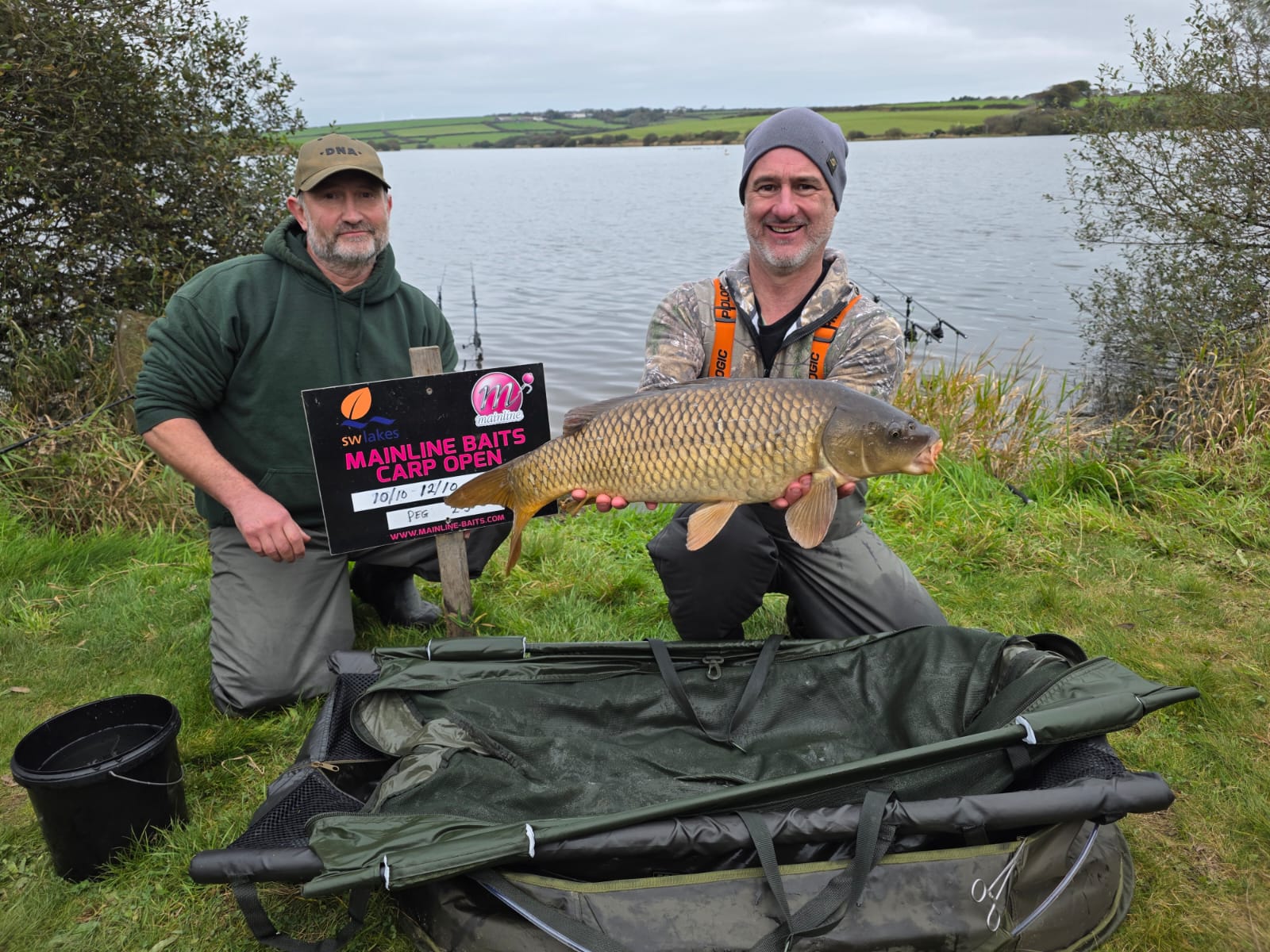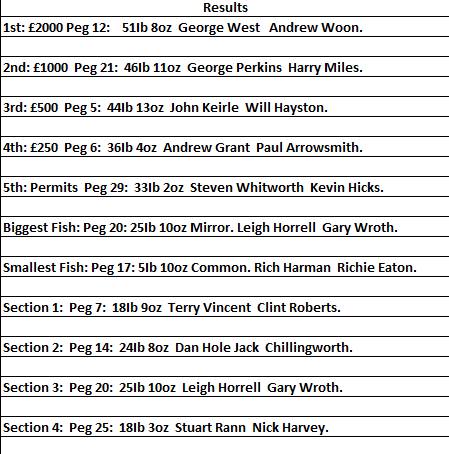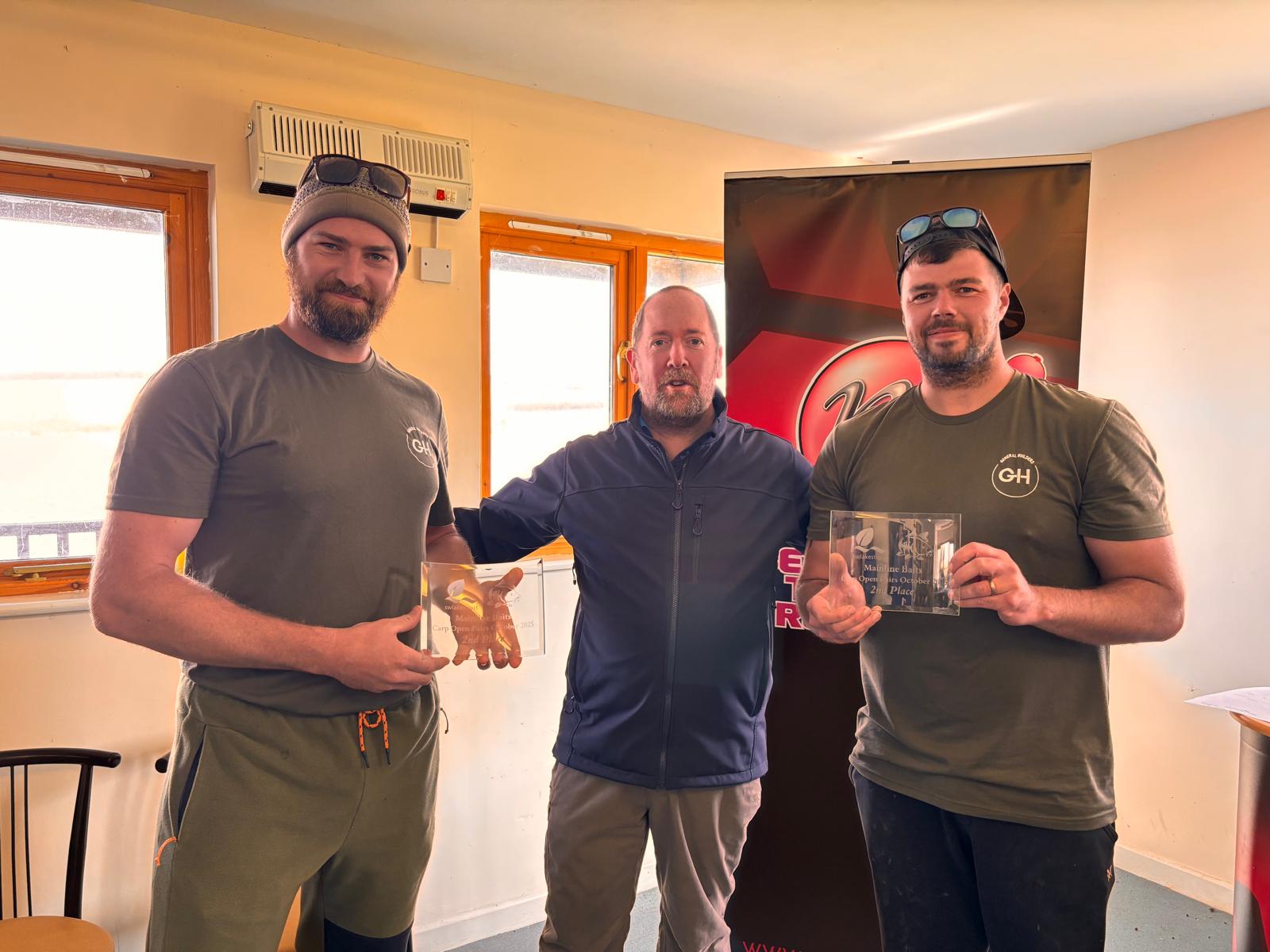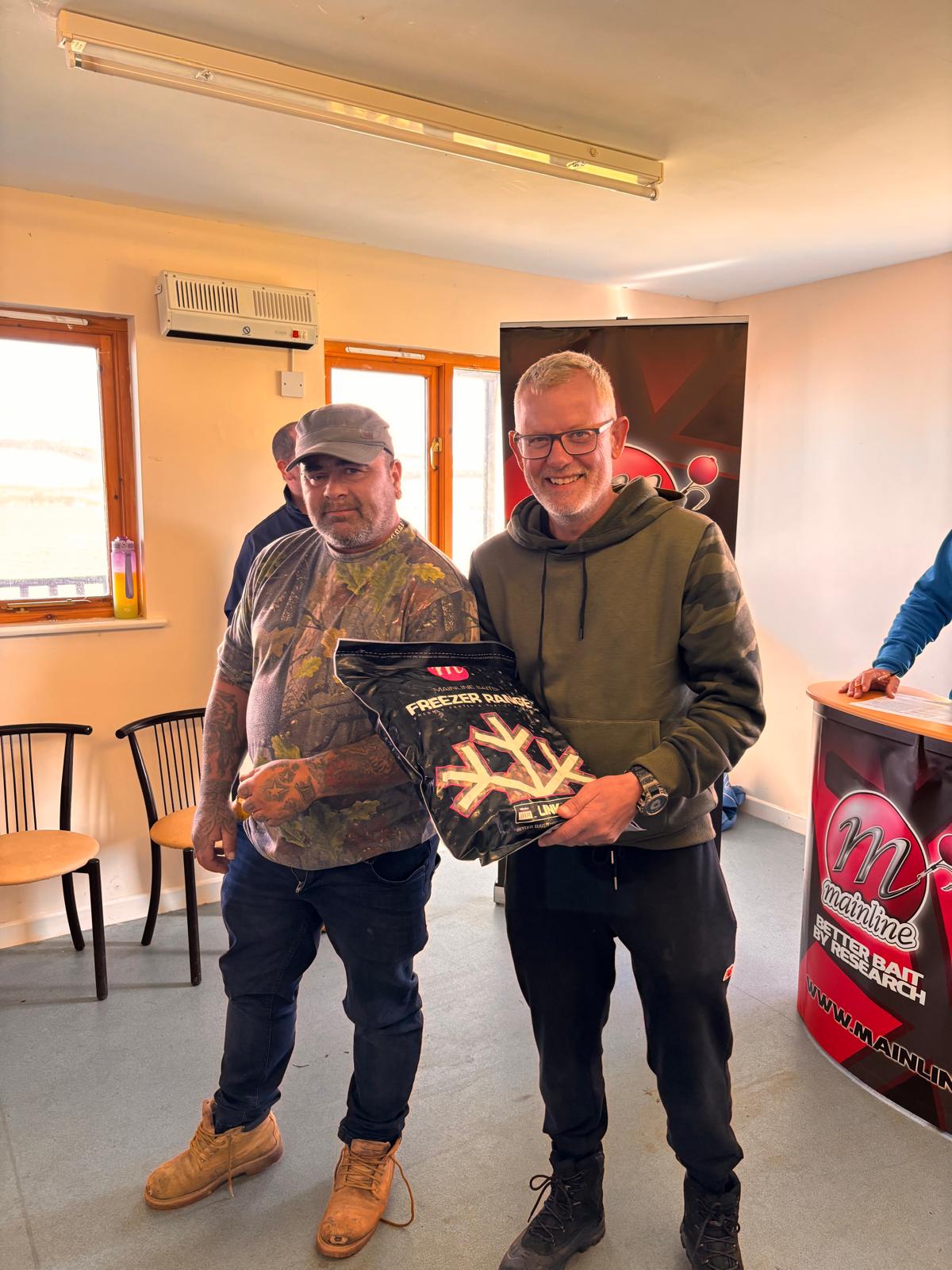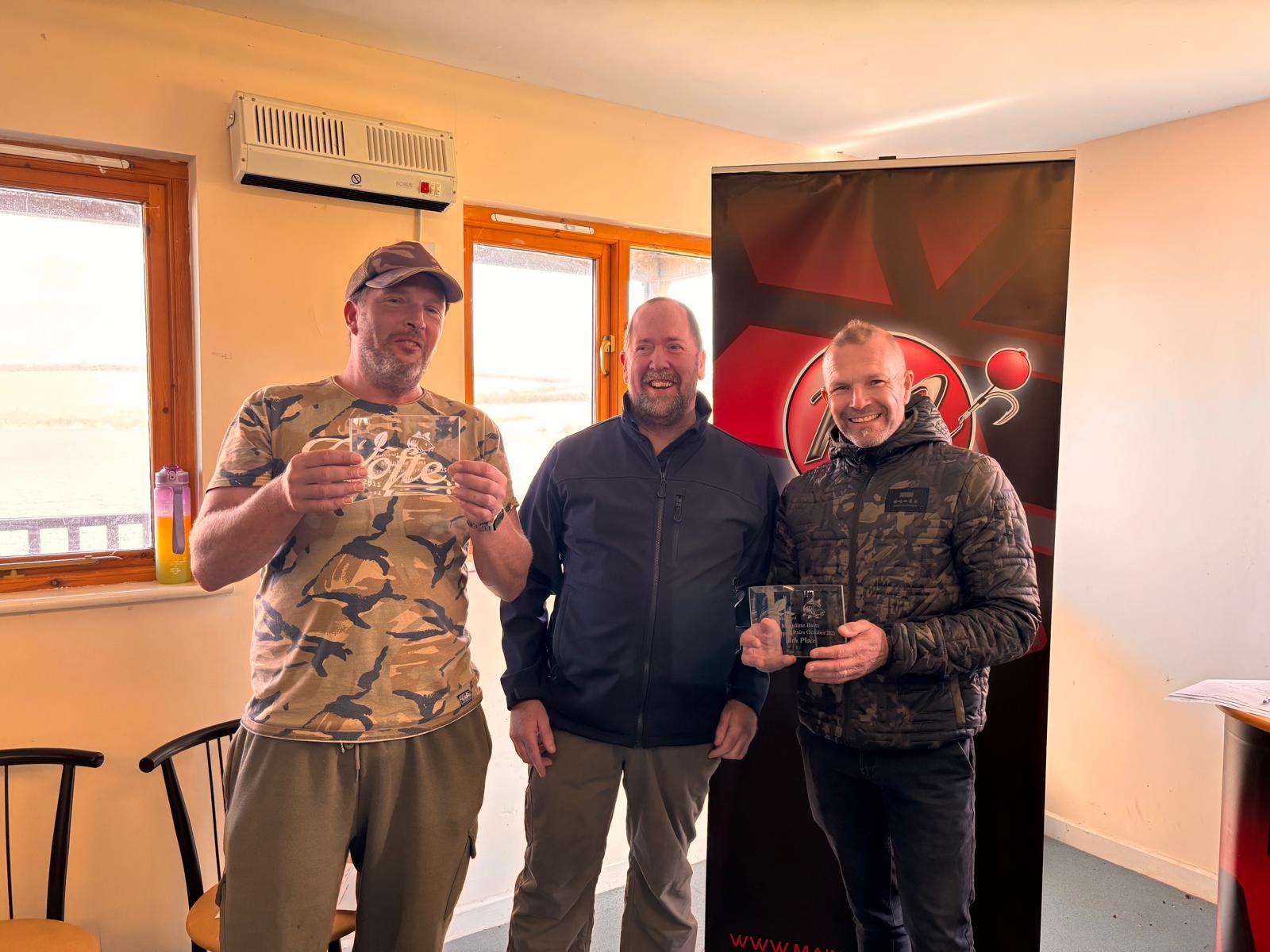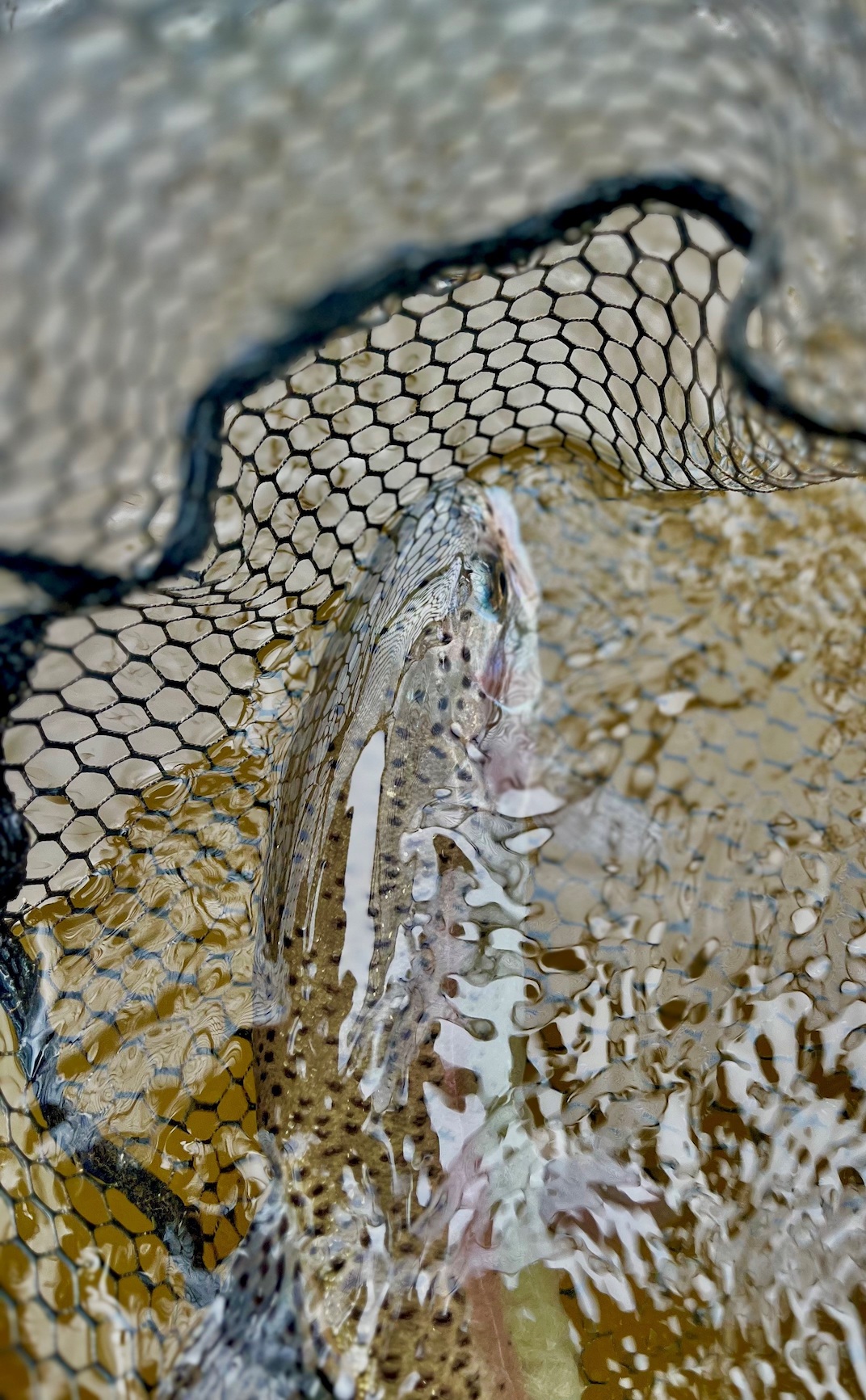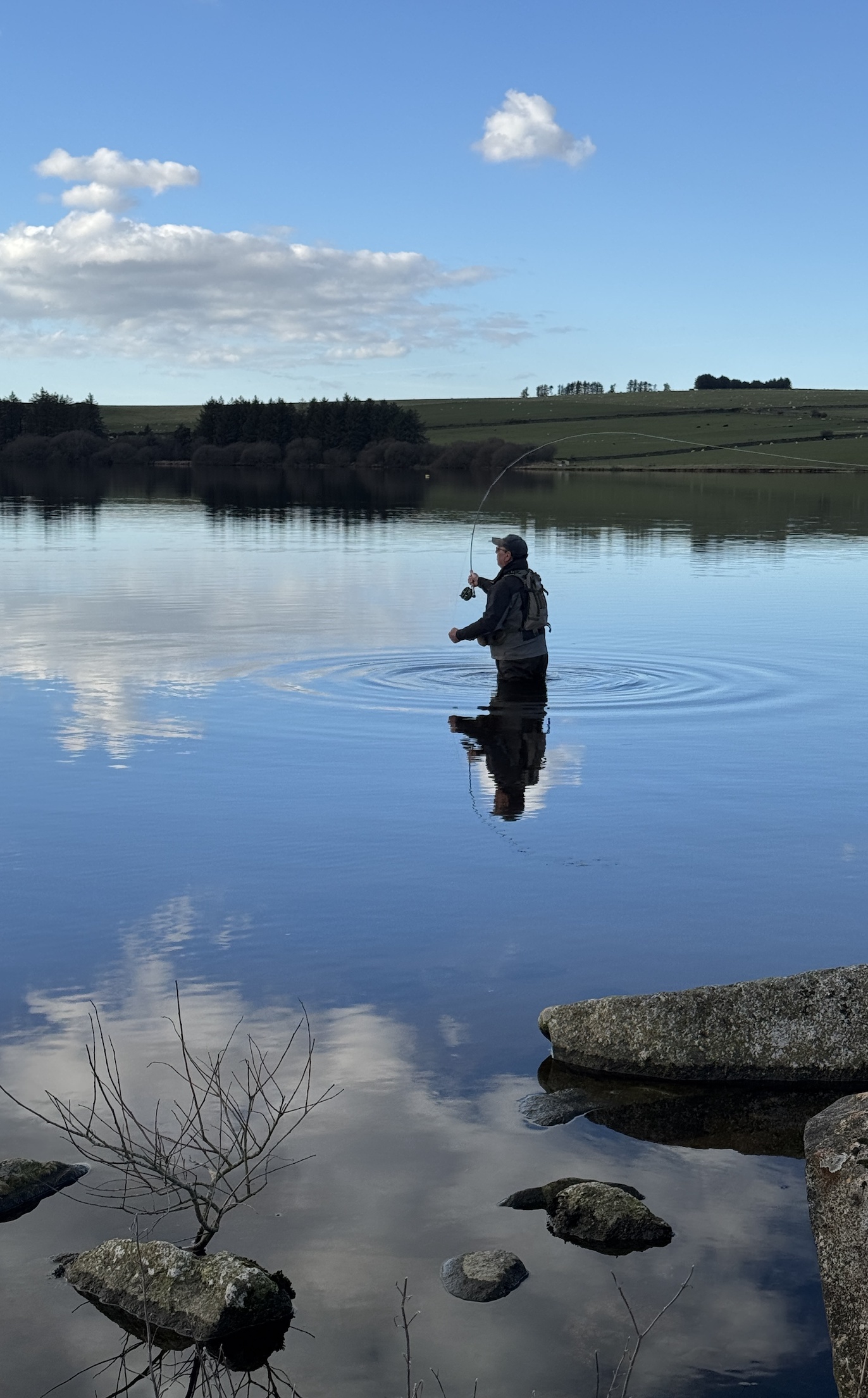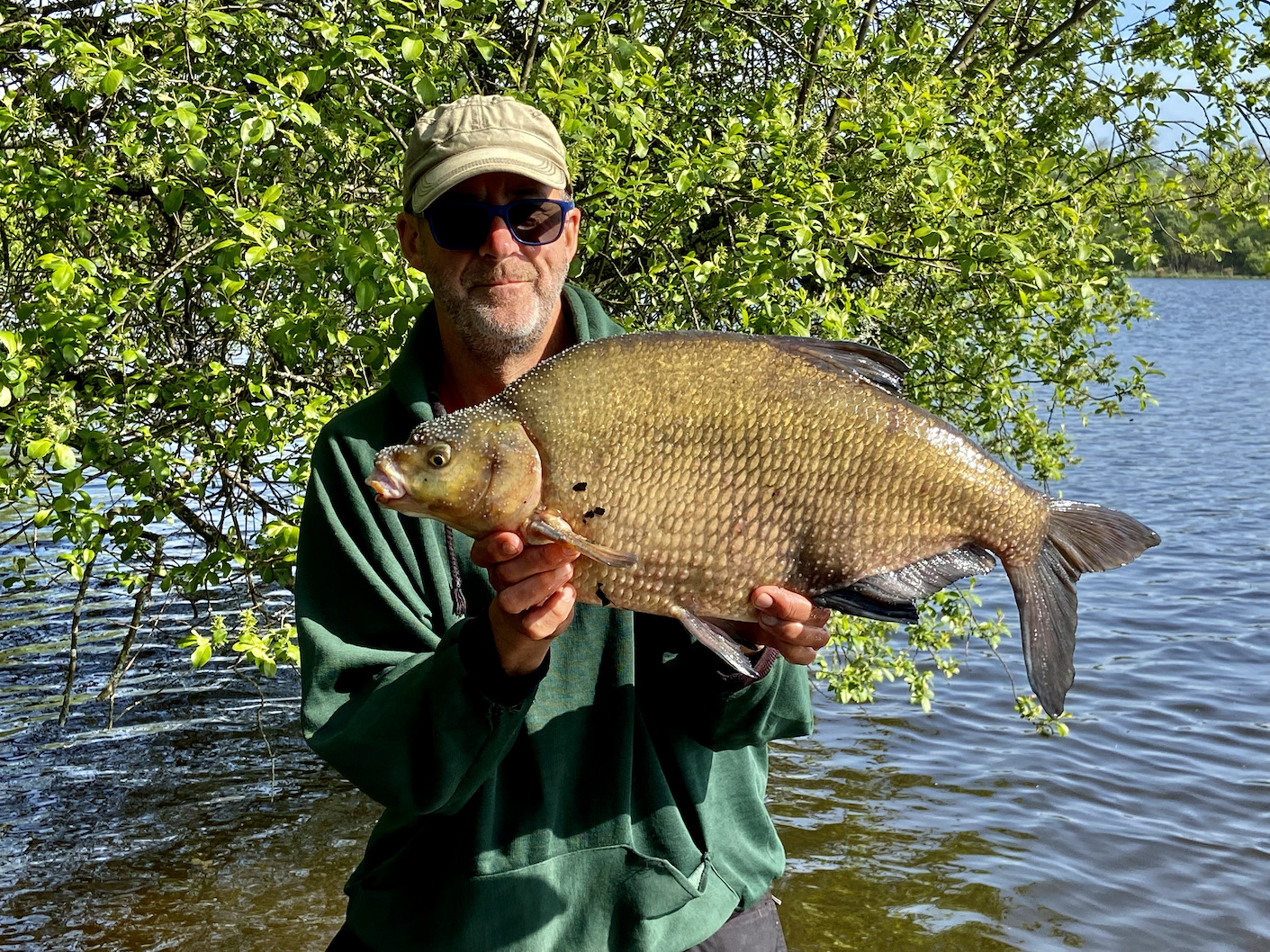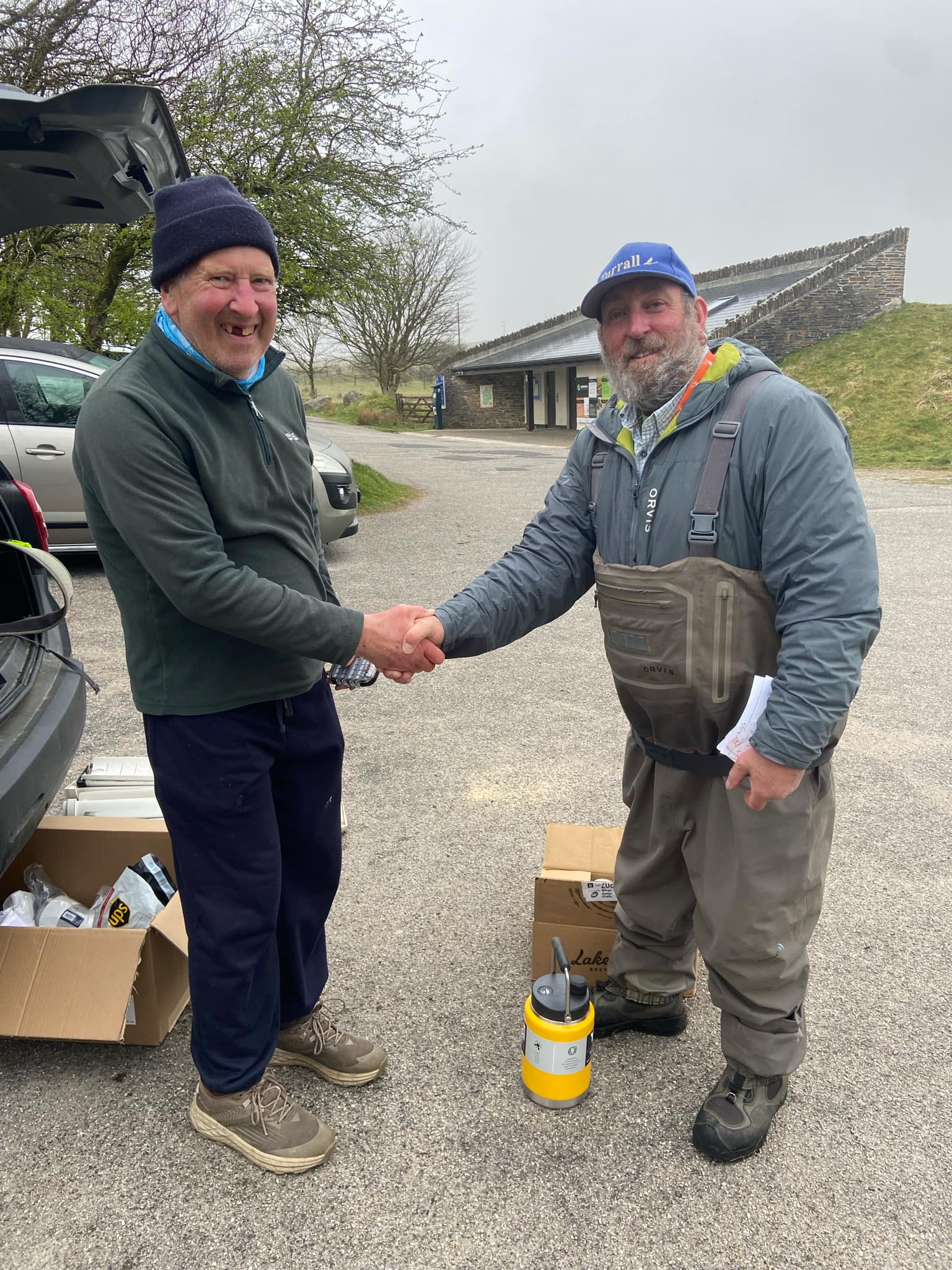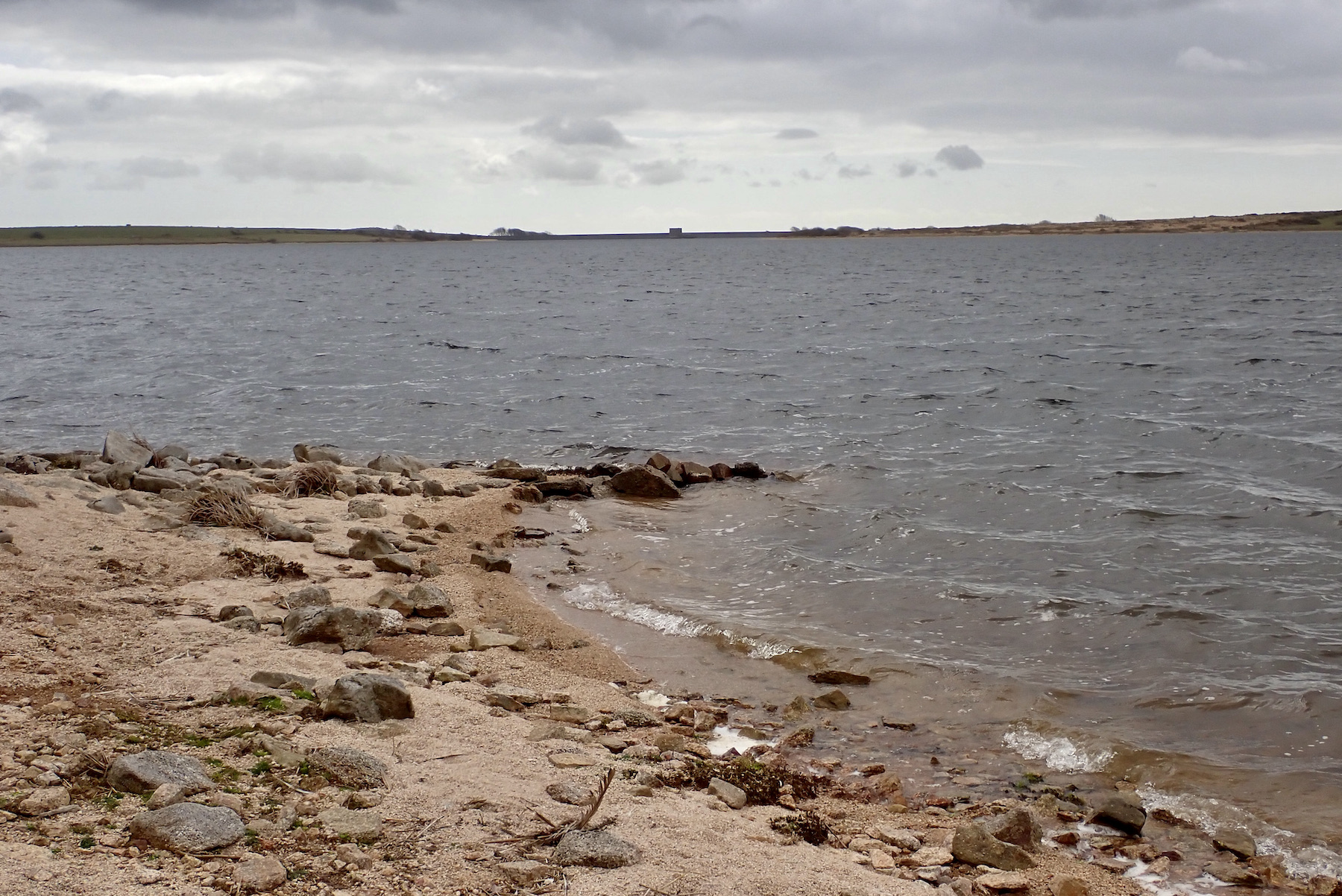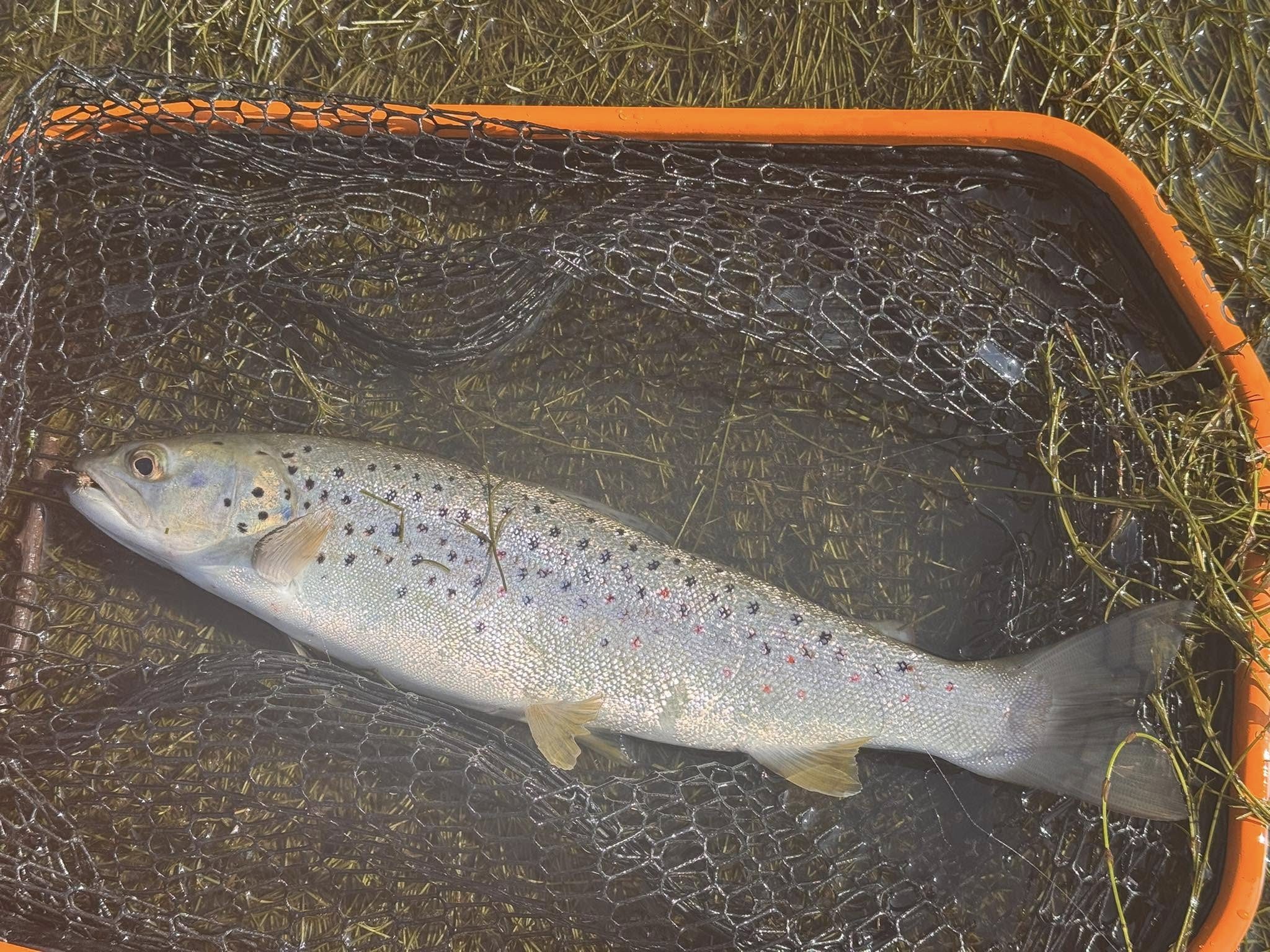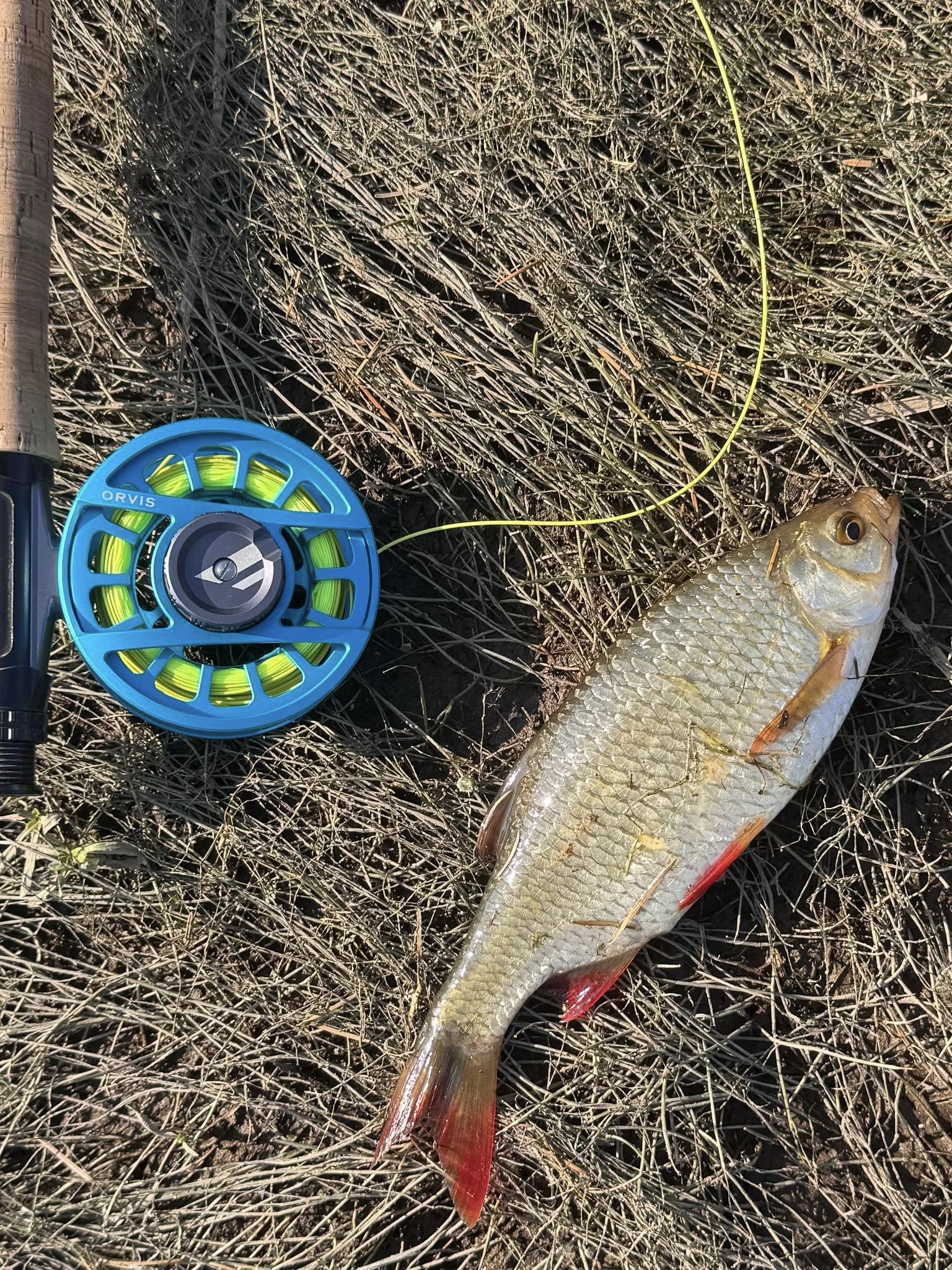South West Lakes Trust Trout Fisheries Report
October 2025
A month of mixed weather conditions, some days warm and sunny, others wet, windy, and cooler, which, along with cooler nights, has meant that water temperatures are starting to drop, and water levels to slowly rise. Storm Amy helped to stir things up, with strong winds and some heavy downpours making angling conditions challenging.

Fishing:
Kennick – The fishing improved as the month progressed, with anglers averaging 2.3 fish per rod overall. The best locations included Smithacott, The East Wall, The Narrows, Poplar Bay and Bracken Point, with boat anglers doing well in Clampitts and in the deeper central water. Fish proved to be feeding at all depths, so anglers needed to be open-minded to trying a selection of different line methods and tactics. Similarly, a wide variety of fly types all caught fish, depending on the conditions on the day (particularly successful patterns included Black Hoppers, Foam-back Daddies, Sedges, Buzzers, Montanas, Damsels, Diawl Bachs, Cats Whiskers, Orange Blobs, Cormorants and Nomads).
Graham Roberts (from Totnes) and his boat partner caught four rainbows to 4lbs on a sunny day, about 16ºc, fishing deep with lure patterns; in another session they caught thirteen fish to 3lb 12oz, again using fast sinking lines and lures. Andrew Kirchin (from Dawlish) caught two rainbows to 3lb, using foam-back Daddies, while Richard Berrisford caught two rainbows to 3lb using a mini-snake pattern on an intermediate line in one session, and another six fish to 2lb 10oz on a deep-fished Tequila Booby on another visit. For operational reasons, South West Water has recently dropped the level considerably, which has restricted the number of boats available, and left some banks unfishable due to soft mud – the level is now down to 32%. Check the Trust’s website for the latest updates.
Burrator – The fishing at Burrator continued to improve, with anglers achieving an overall monthly average of 4.6 fish per rod (with a couple of weeks exceeding six fish). Generally, floating or intermediate line tactics proved to be the most successful. Popular locations included Longstone, Back Bay, Pigs Trough, Sheepstor, Discovery Bay and Pines. Foam Daddies, Hawthorns, Tequila Hoppers, Sedges and Klinkhammers caught surface-feeding fish, while deeper fish were caught on both nymphs (Damsels, Buzzers and Hares Ear Nymphs) and lure patterns (Goldhead Yellow and Orange streamers, Tequila Blobs, Orange Fritz and Cats Whiskers).
Gordon McLeod (from Tavistock), caught a bag of twelve fish, which included a cracking 4lb rainbow (a personal best as well as the best fish caught at Burrator this season) on a Candy Blob; Gordon also caught a bag of eleven rainbows to 2lb on another visit using a Tequila Blob. Daniel Forrester (from Hatherleigh) also caught eleven fish to 2lb using a Candyfloss Booby pulled slowly across the surface to imitate floating fry. Water levels are now at 47%.
Stithians – The fishing continued to improve as the month progressed, with anglers averaging well over three fish per visit in two of the weeks. Floating line tactics proved to be the best, with plenty of fish rising to dry patterns (Hares Ear Parachute, Elk Hair Sedge, Beetles, Midge Hoppers and Black Hoppers). Sub-surface feeders were caught on Diawl Bachs, Spider patterns and Damsels, as well as lure patterns (Orange Blobs, Minkies, Cormorants, Black Fritz, Cats Whiskers and Fry Patterns). Popular locations included The Dam, Mossopps, Goonlaze, Pipe Bay, Hollis, Yellowort and Sluice Bank. John Henderson had an excellent day’s sport, catching five rainbows and twelve browns, with most fish taking surface patterns. Levels are at 50%.
Colliford – Colliford fished consistently well throughout the month, with anglers averaging 3.2 fish per visit, with Lords Waste, Middle Car Park, Stuffles, Dam and East Bank producing the best sport. Floating line tactics proved the be the best option, with Dry Sedges, Bibio Hoppers, Daddylonglegs, Olive Crunchers, Bobs Bits, Zulu, Bibios, Soldier Palmers, Alexandras and Black and Peacock Spiders all catching well. Chris Tilyard caught seven browns to 12” on Bobs Bits, while Paul Mockford caught four fish to 30cm on a Bibio pattern. Water levels are now at 44%.
Fernworthy – The fishing at Fernworthy proved to be fairly consistent throughout the month, with anglers averaging 1.4 fish per visit. Generally floating lines were preferred, with fish taking a variety of patterns on or just under the surface (Sedges, Black Parachute patterns, Silver Invicta, Kate McLarens, CDC Hoppers, Daddy Longlegs, Soldier Palmers, Hares Ear and Pheasant Tail nymphs). Thornworthy, Dam bank, Picnic area and South Bank proved to be the most productive locations. Levels are at 71% at time of writing.

Roadford – The excellent sport continued at Roadford as the season draws to an end, with anglers averaging 3.5 fish per visit (up to 5.8 in one week). Gaddacombe, Wortha, Big Oaks, South Shop, Goodacre and Daveys Bank all proved to be popular locations, with anglers preferring floating line tactics. Successful patterns included Diawl Bach, Soldier Palmer, Zulu, Cats Whiskers, Black Gnats, Black Tadpoles, Spiders, Crunchers and Black Pennels. Dean Boucher (from Gunnislake) caught eleven browns to 16” using a Soldier Palmer and Black Tadpole; he also caught thirteen fish up to 1lb on a previous visit, using pulled wet patterns (again Soldier Palmer and Black Tadpole). Chris Langton also caught five browns. Water levels are now at 60% capacity.




